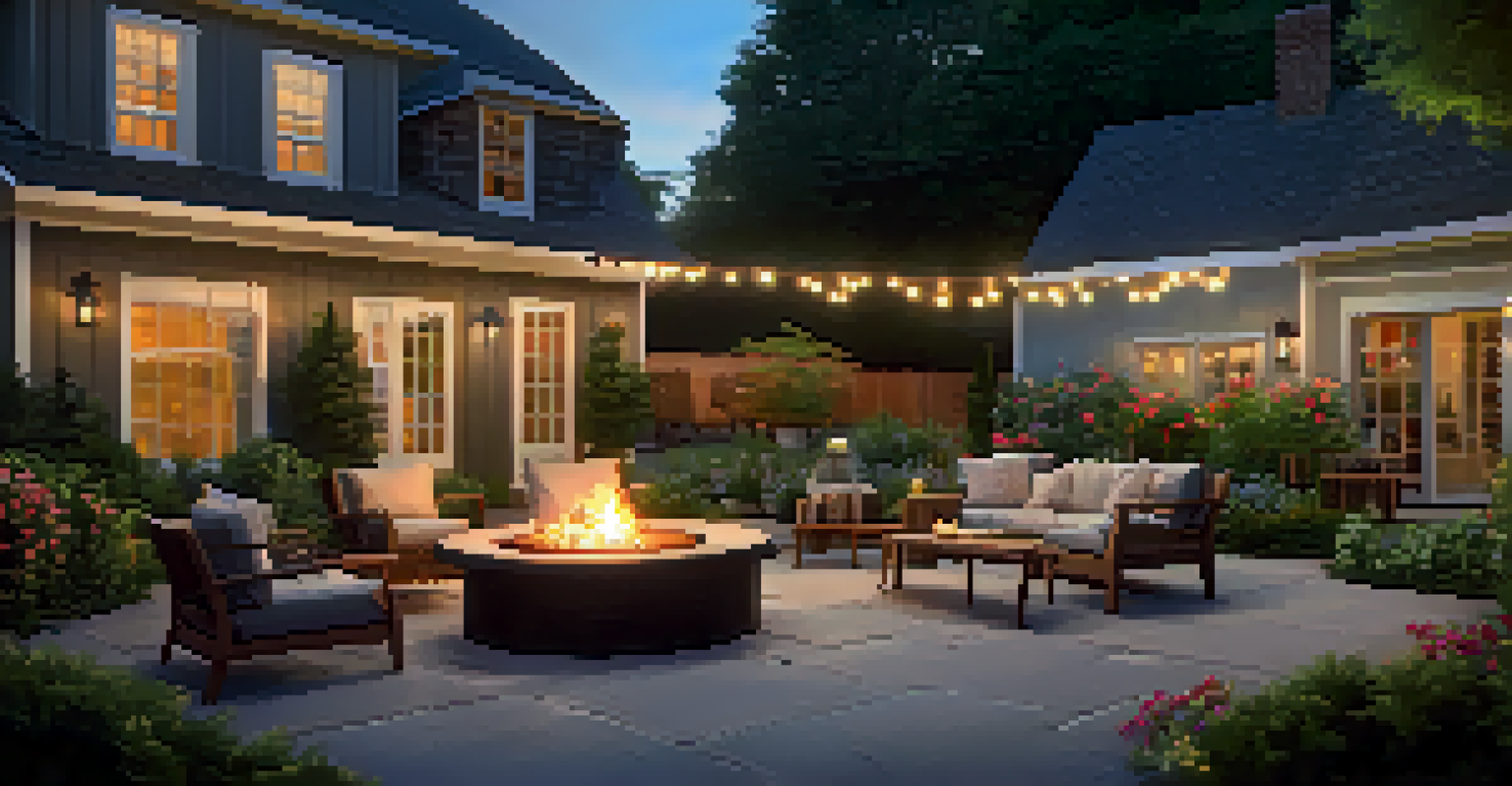Understanding the Psychology of Home Buyers in Flipping

The Emotional Journey of Home Buyers
Buying a home is often one of the most emotional decisions a person can make. Home buyers typically experience a rollercoaster of feelings, from excitement to anxiety, especially when it comes to flipping properties. This emotional journey can significantly influence their purchasing decisions.
Home is the starting place of love, hope, and dreams.
During the home buying process, buyers may envision their future in the space, imagining family gatherings or cozy nights in. These dreams can lead to a stronger emotional attachment, making it easier for them to overlook flaws during viewings. Understanding this emotional investment can help flippers cater to buyers’ desires.
Moreover, the emotional aspect can drive buyers to act quickly, sometimes leading to impulsive decisions. Flippers should recognize this emotional urgency and create a welcoming atmosphere that encourages buyers to envision themselves in the property.
The Impact of First Impressions
First impressions are crucial in the home buying process, especially in flipping. The moment a buyer walks into a flipped property, their initial thoughts can set the tone for the entire viewing. Thus, creating an inviting entrance is key to capturing their interest.

Consider the role of curb appeal; a well-maintained exterior can instantly attract potential buyers. In flipping, attention to detail in landscaping, paint, and lighting can significantly impact how buyers perceive the property. A great first impression can ignite excitement and lead to a deeper exploration of the home.
Emotional Impact on Buyers
Home buyers often experience a range of emotions that can influence their purchasing decisions, making it essential for flippers to understand and cater to these feelings.
Additionally, the interior layout and staging can further influence buyers’ feelings about the space. Flippers should aim to create an environment that feels both welcoming and functional, making it easier for buyers to imagine their own lives within those walls.
Understanding Buyer Motivation
Different buyers have varying motivations that drive their purchasing decisions. Some may be looking for a family home, while others seek an investment opportunity. Understanding these motivations can help flippers tailor their renovations to meet specific buyer needs.
The best investment on Earth is earth.
For example, families might prioritize open spaces and functional layouts, while investors may focus on return potential and resale value. By identifying the target market, flippers can make strategic decisions about renovations and upgrades. This targeted approach can lead to a quicker sale at a higher price.
Moreover, understanding buyer motivations enables flippers to adjust their marketing strategies. By highlighting features that resonate with specific buyer groups, such as energy efficiency for environmentally-conscious buyers, flippers can effectively attract their ideal clientele.
The Role of Social Proof in Home Buying
Social proof can heavily influence home buyers’ decisions, especially in flipping. Buyers often look for validation from others, such as friends, family, or online reviews, to ensure they are making the right choice. This phenomenon can play a significant role in the success of a flipped property.
For instance, showcasing testimonials from previous buyers or highlighting successful sales can create a sense of trust. Flippers can leverage social media platforms to share positive experiences and build credibility. The more buyers see that others have had positive experiences, the more likely they are to feel confident in their decision.
Importance of First Impressions
Creating a welcoming entrance and maintaining curb appeal is crucial, as first impressions can significantly affect a buyer's interest and perception of the property.
Additionally, hosting open houses can encourage potential buyers to interact with one another, creating a buzz around the property. When buyers see others interested, it can reinforce their desire to purchase, tapping into the psychological concept of fear of missing out.
Creating a Sense of Belonging
A strong sense of belonging can significantly affect a buyer's decision-making process. When potential buyers feel that a home resonates with their lifestyle or values, they are more likely to commit. Flippers can create this sense of belonging through thoughtful design and community integration.
For example, incorporating local elements, like artwork or materials sourced from the area, can help buyers connect with the property on a personal level. Additionally, showcasing nearby amenities, such as parks or schools, can reinforce the idea of a community where they would feel comfortable and welcomed.
By fostering a sense of belonging, flippers can create an emotional bond between the buyer and the property. This connection can lead to a higher perceived value, encouraging buyers to move forward with their purchase.
The Importance of Trust in the Buying Process
Trust is a cornerstone of any successful home buying experience. Buyers need to feel confident in their decision to invest in a flipped property, which means flippers must establish trust from the outset. Transparency and honesty can go a long way in building this essential foundation.
Providing clear information about renovations, repairs, and even potential issues can help buyers feel more at ease. When flippers communicate openly, it not only builds trust but also positions them as knowledgeable professionals in the market. This approach can differentiate them from competitors who may not prioritize transparency.
Building Trust and Credibility
Establishing trust through transparency and offering warranties can enhance buyer confidence, leading to smoother transactions in the flipping market.
Additionally, offering warranties or guarantees on work done can further enhance trust. Buyers are more likely to invest in a property when they feel assured that their investment is protected, leading to a smoother transaction process.
Leveraging Visual Storytelling in Marketing
Visual storytelling plays a vital role in capturing buyers’ attention in the flipping market. High-quality images and engaging videos can evoke emotions, creating a narrative that resonates with potential buyers. By showcasing a property’s transformation through visual means, flippers can attract more interest.
For instance, using before-and-after photos can illustrate the improvements made during the flipping process. This not only highlights the flipper’s work but also allows buyers to envision the potential of the space. Compelling visuals can create an emotional connection, motivating buyers to learn more.

Moreover, incorporating virtual tours or 3D walkthroughs can enhance the buying experience. These tools allow buyers to explore the property at their own pace, providing a sense of autonomy in the decision-making process, thus increasing their likelihood of engagement.
Final Thoughts on Buyer Psychology in Flipping
Understanding the psychology of home buyers is crucial for anyone involved in flipping properties. By recognizing the emotional journey, motivations, and needs of buyers, flippers can tailor their strategies for greater success. This insight not only helps in renovations but also in marketing and sales.
As the housing market continues to evolve, staying attuned to buyer psychology will be a key differentiator for flippers. By fostering trust, creating a sense of belonging, and leveraging visual storytelling, they can effectively engage their target audience.
Ultimately, the goal is to create a space that buyers can envision as their own. In doing so, flippers not only enhance the marketability of their properties but also contribute to the emotional satisfaction of buyers, resulting in a win-win situation.